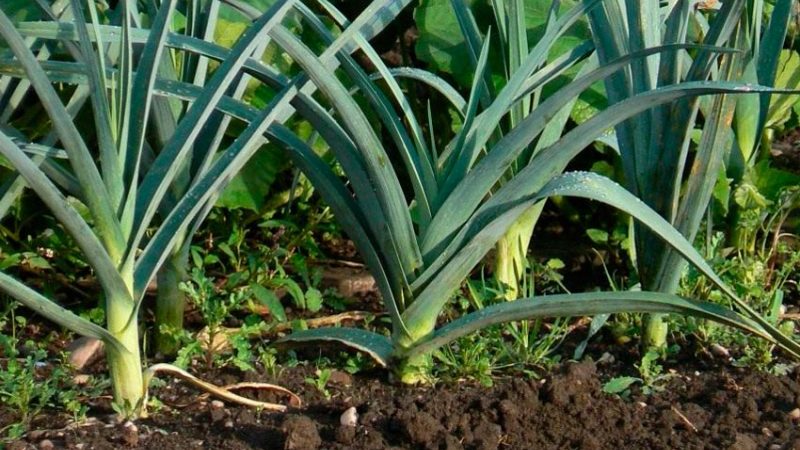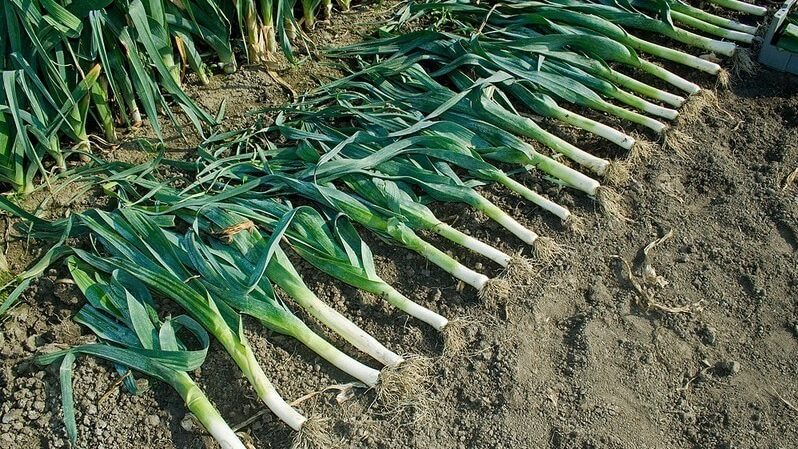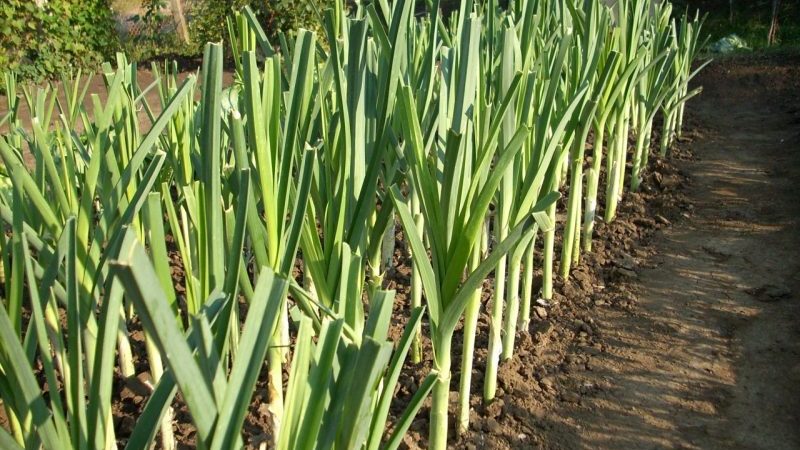What to do with the harvest: can the leeks be left in the ground for the winter and how best to prepare it for wintering
Leek - the culture is relatively new for Russian gardeners, so questions often arise about its cultivation. One of them is whether leeks can be left in the ground for winter. We will talk about the risks of wintering leeks under the snow and describe the process of preparing it for storage.
The content of the article
Is it possible to leave leeks in the ground for the winter
You can and even need to leave leeks in the garden in the following cases:
- You need to independently collect the seeds of your favorite variety. The culture is two-year-old, in the first year the onion increases its vegetative mass, and in the second it gives an arrow with seeds.
- Desire in early spring to collect fresh juicy greens from your site. During storage in a cellar or basement, the leek loses most of its taste.
- There is no way to store the harvest harvested in the fall.
Do not leave the leek in the garden before winter:
- if you live in climatic conditions with frosty winters and little snow, the onion will freeze;
- if early varieties not suitable for wintering under the snow were planted or non-frost-resistant mid-season varieties.

Frost resistance of leek
Well-rooted, with a rich vegetative mass, plants of mid-season (Kazimir, Consumer, Elephant) and late (Alligator, Bandit, Autumn giant) varieties are able to withstand temperatures of –4… –6 ° С.
Frost-resistant varieties (for example, late-ripening Karantansky) can withstand up to -15 ° C and overwinter in the ground. But without sufficient snow cover in the middle lane, as well as in severe frosts, even this bow will die.
There are agronomic techniques that will help the crop overwinter in the garden bed.
How to prepare leeks for wintering:
- Spud the stems of the plant 8-10 cm with garden soil or peat.
- In areas with a cold climate, mulch, cover with spruce branches or other material that retains the snow cover.
- Cover with snow as soon as it falls. This is especially true during severe winters. 1 cm of snow cover protects from frost 1 ° C.
- Place the arches over the bed and cover them on top with a non-woven material. In winter, throw snow inside this "winter greenhouse".
Timing of harvesting leeks

Early varieties begin to be dug out from the end of July for the preparation of salads and hot dishes.
For storage, varieties of medium and late ripening are planted. They are harvested as late as possible - as close to frost as possible. In the central part of Russia - in October. In the southern regions, late onions are harvested depending on the weather - until December.
In areas with a cold climate (middle lane, northern regions, Siberia), late varieties may not have time to ripen before the time of harvest - their growing season is 200 days. In such cases, the plants are left in the ground before winter.
Important! Dig the onions in dry weather. This is done carefully so as not to damage the stem, otherwise it will not be stored for a long time.
Crop storage conditions
Leeks are picky about conditions. For storage, he needs a low temperature (from 0 to + 2 ° C) and a humidity of 80-85%. Only in this case will it preserve the juiciness of the leaves, the elasticity of the stem and the maximum supply of vitamins and microelements.
Storage periods
The timing depends on the conditions that will be created to preserve fresh onion stalks.
Within 6-7 months from the date of harvest, the leek is stored in the cellar of a private house. The plants are dug up, the green leaves are cut off by a third, the roots are shortened to 4-5 cm.
A box with wet sand is prepared and the onion stalks are placed vertically in it, pouring them between the rows with the substrate.The higher the onion is covered with sand, the better it will be stored, the stems will remain white and juicy.
Important! After removing the stalks from the drawer for food, do not leave empty space in the rows, add more moistened sand or compact the leek.
The harvest is also stored on the insulated balcony. The technology is the same, but the box is additionally covered with a black non-woven material. Shelf life will vary depending on weather conditions and temperature fluctuations. At temperatures from -5 to + 5 ° C, leeks will last up to 5 months. Warming up the air above + 10 ° С will lead to the fact that the plants will wither and lose their taste.
The stems are periodically inspected for rot or drying out.
The leek will stay in the refrigerator at + 2 ° C for 4-5 months. To do this, it is prepared: the stems are cleaned, the roots and leaves are trimmed, then packed in plastic wrap with microperforation. This will create an optimal microenvironment for the plants in terms of moisture and prevent them from drying out.
If there is a possibility and a place in the freezer, the stems, cut into small pieces, are frozen by placing them in bags or containers. The shelf life of such a product is about a year.
It is interesting:
The technology of planting and growing onions in a package without land is a super way!
How to properly store potatoes without a cellar in the ground until spring.
Tips & Tricks

We offer useful advice from gardeners based on personal experience:
- The most unpretentious and well tolerated wintering in the soil is the Karantansky variety, tested over the years.
- On a farm in the Pskov region, the frost-resistant variety Bandit grow direct sowing of seeds into the ground at the end of July. Before winter, they huddle it up, and in June of next year it gives a crop.
- In the southern regions, the leek collected from the garden is transferred to a vacated greenhouse: they make a trench, lay out the stems in it and cover more than half with earth. So it is stored until spring. In case of severe cold weather, the onion is additionally covered with a thick cloth.
- If the winter is mild, during the thaw, several leeks are dug out of the garden for food. It is enough to pour hot water on the ground around it.
- Successfully overwintered plants are eaten in the spring before the leek releases the arrow, otherwise the stem will become tough.
Conclusion
For successful wintering of leeks in the open field, preference is given to mid-season and late frost-resistant varieties. Leave plants huddled and sheltered from frost in the garden before winter. If this is not possible, the leek stalks are stored at home after harvest.